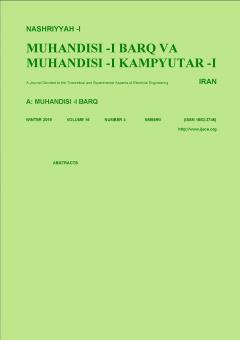A New Statistical-Physical UTD Based Channel Model for Calculating Channel Capacity in Mobile Urban Areas
Subject Areas : electrical and computer engineering
1 -
Abstract :
In urban areas, wireless communications suffer from severe fading due to reflections and diffraction of waves from buildings and mobility of receivers. Hence, in design of wireless networks, we need a model to predict propagation channels, in order to determine communication methods between transmitters and receivers. Most of current mobile wireless communication models are based on measurements. In this paper, we want to introduce a new statistical physical model in which buildings are considered as a fixed part of the model and the phenomena of diffraction and reflection are modeled using the uniform theory of diffraction (UTD).On the other hand, the receiver in this model is considered as a car. The position of this car is predicted using the Poisson point process (PPP). We can predict channel capacity in urban areas, taking into account the density of traffic and urban traffic by using this model. Furthermore, in order to validate the proposed model, we compared the results of this model with a statistical model based on measurements and there is a good agreement between them.
[1] C. Oestges, S. R. Saunders, and D. Vanhoenacker-Janvier, "Physical-statistical modelling of the land mobile satellite channel based on ray-tracing," IEE Proc. on Microwaves, Antennas, and Propagation, vol. 146, no. 1, pp. 45-49, Feb. 1999.
[2] S. R. Saunders and A. Aragon-Zavala, Antennas and Propagation for Wireless Communication Systems, Norwood, Wiley Press, 2007. Ch.11.
[3] G. Proakis and M. Salehi, Digital Communications, 5th Edition, McGraw-Hill, 2007. Ch 13.
[4] M. F. Catedra and J. Perez-Arriaga, Cell Planning for Wireless Communication, Norwood, MA: Artech House Press, 1999. Ch.2.
[5] M. J. Neve and G. B. Rowe, "Contributions toward the development of a UTD-based model for cellular radio propagation prediction," IEE Proc. on Microwaves, Antennas, and Propagation, vol. 141, no. 5, pp. 407-414, Oct. 1994.
[6] A. Tajvidy and A. Ghorbani, "A new uniform theory-of-diffraction-based model for the multiple building diffraction of spherical waves in microcell environments," Electromagnetics, vol. 28, no. 5, pp. 375-388, Jun. 2008.
[7] A. Tajvidy, M. A. Pourmina, M. Nasermoghadasi, and A. Haghbin, "An improved UTD based model for the multiple building diffraction of plane waves in urban environments by using higher order diffraction coefficients," Wireless Personal Communications, vol. 72, no. 4, pp. 2577-2586, Oct. 2013.
[8] R. J. Luebbers, "Finite conductivity uniform GTD versus knife edge diffraction in prediction of propagation path loss," IEEE Trans. on Antennas and Propagation, vol. 32, no. 1, pp. 70-76, Jan. 1984.
[9] S. Loredo, A. R. Alonso, and R. P. Torres, "Indoor MIMO channel modeling by rigorous GO/UTD-based ray tracing," IEEE Trans. on Vehicular Technology, vol. 57, no. 2, pp. 680-692, Mar. 2008.
[10] D. S. Shiu, G. J. Foschini, M. J. Gans, et al., "Fading correlation and its effect on the capacity of multi element antenna systems," IEEE Trans. on Communication, vol. 48, no. 3, pp. 502-513, Mar. 2000.
[11] Y. Jeong, J. W. Chong, H. Shin, and Z. Win, "Intervehicle communication: cox-fox modeling," IEEE J. Selected Areas in Communications, vol. 31, no. 9, pp. 418-435, Sept. 2013.
[12] GPP TR, 25.996, v11.0.0. Website: http://www.3gpp.org/DynaReport/25996.htm, 2012.
[13] E. Torabi, A. Ghorbani, and A. Tajvidy, "A modified diffraction coefficient for imperfect conducting wedges and buildings with finite dimensions," IEEE Trans. on Antennas and Propagation, vol. 57, no. 4, pp. 1197-1207, Apr. 2009.
[14] A. Shirook, F. Kohandani, and G. Wen, "Analysis of a MIMO outdoor channel with hybrid EM-based modeling," IEEE Antennas Wireless Propagation Letter, vol. 6, pp. 506-509, 2007.

